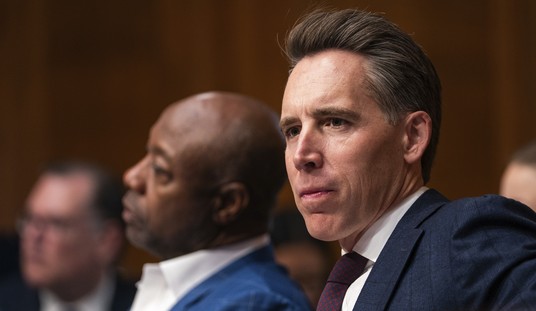The opinions expressed by contributors are their own and do not necessarily represent the views of RedState.com.
If the past two years have taught us anything, it’s that we must become more aware of what is going on around us, especially when it comes to our children. It could be your own children, or children in your life, but the targeting of the innocents and the vulnerable by the very people and institutions that we assumed were there to help them, has been mind-boggling. According to human trafficking advocacy organization Exodus Road, 43 percent of human trafficking victims are in forced labor. 44 percent are in forced marriages. Only 13 percent of human trafficking victims are being exploited in the commercial sex trade.
Hence, the title of author John DiGirolamo‘s latest book: It’s Not About the Sex. When it comes to human trafficking, sex is the least of the factors, yet the subject matter is still something that most people shy away from. DiGirolamo wants any potential readers to know,
“I like to tell people God loves a comeback story, and this is a comeback story.”
Along the same structure of his last book, It’s Not About the Badge, DiGirolamo views his subject matter through the lens of those who have experienced it and who have overcome with hope. DiGirolamo interviewed an advocate who started a non-profit to help children, men, and women get out of trafficking; a law enforcement officer whose focus is on human trafficking; a trafficking survivor; and, a former Brothel madam and her “tale of redemption.”
“When people think of sex trafficking, they think of sex. The book is not about that per se. It’s more about the people who have some perspective on that issue. The book is about the people, and not the sex.”
Not that you may not go away feeling gut-punched at the subject matter, but you will more than likely leave the pages with more knowledge that you can use to not only help yourself with your own children, but maybe help others who are fighting to escape this snare.
Here are some facts which, thanks to DiGirolamo’s research, I found myself enlightened by:
-
- 60 percent of trafficking occurs through people the child knows. “And that’s what surprises most people is that half the time it is someone that they know,” DiGirolamo said, explaining:
“It’s a family member, it’s someone in their neighborhood, it’s someone at their school. I wrote this book focusing a lot on the stories people don’t expect. I think people expect this to happen in Downtown Los Angeles or on the border, but they don’t expect it to happen in a kind of nice, suburban, or small-town America. They don’t think that someone is living at home, that’s not going to be a problem. I focused on a couple of stories that show someone living at home, going to school, yet they’re still being exploited.”
- Kidnapping is only 5 percent. The common, “Hollywood hook” is not common at all.
- Boys make up 45 percent of victims that are being exploited. It’s not just girls. “Just because you have sons, it doesn’t mean you have nothing to worry about,” DiGirolamo warns. Bottom line: “You really need to pay attention to what’s going with your kid,” he said.
Predators’ stalking ground is the internet. From creating fake social media and gaming profiles, to using technology like PayPal, Zelle, and Venmo for money transfer and laundering, to operating under the cloak of secrecy, predators are comfortable and adept at using the online space to lure vulnerable children, and it is the parent’s job to become hyper-aware of how this happens. It may not be just a child being trafficked, but as DiGirolamo warns, it can lead to other bad outcomes like extortion and child pornography. DiGirolamo spoke about those factors to look out for, and how predators use them to target the most vulnerable.
Human trafficking is the number two crime globally, after drugs. The sheer volume of dollars is somewhere in the billions (Exodus Road rates it at $150 billion). But where drug trafficking involves substances, a lab, and human choice, in human trafficking’s evil, the human being is the commodity that is bought and sold.
“You’re talking about traumatizing a fellow human being over and over,” DiGirolamo said. “I really want to give a voice to these people who have been exploited.”
DiGirolamo’s book, as well as his follow-up guide: It’s Not About the Predator: A Parent’s Guide to the Internet & Social Media Safety seeks to serve the overwhelmed parent who is either afraid to take charge, or does not know how. Along with showing how predators approach their child through online interaction, the books give real-time examples of the tactics predators use to exploit children. There is also crucial information from an undercover police officer’s viewpoint as the person stalking the predators, how your child can (and will) circumvent parental controls on smartphones and other electronic devices, and how pornography and our culture feed the monsters of sexting, extortion, and human trafficking.
DiGirolamo warned:
“The parents need to parent. If your kid has a smartphone, you’ve gotta be reviewing what’s going on with that smartphone on a regular basis. The question is: Is social media safe? The answer is NO. There are so many ways that kids are online, and that’s where the predators will hang out.
“The predator is in your pocket, right where your phone is.”
It’s been a hard season of lessons in the battle to protect our children, and part of those lessons is absorbing hard truths. DiGirolamo’s book not only supplies that truth, but offers resources and hope to navigate this new reality.
“I try to counter that by saying, there’s definitely some takeaways that are inspirational,” DiGirolamo encouraged.














Join the conversation as a VIP Member